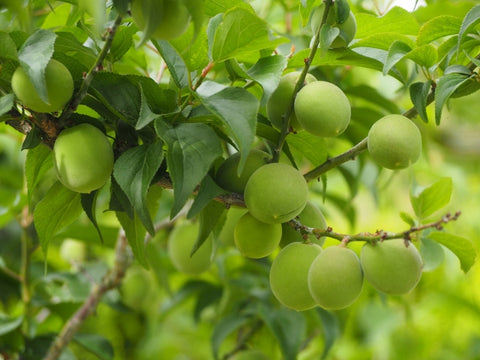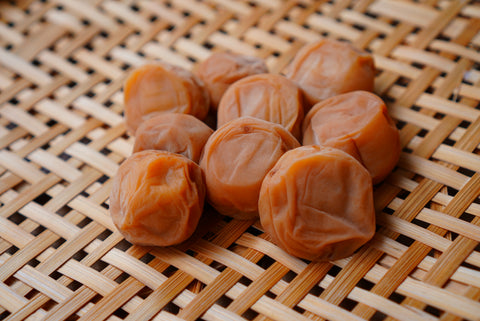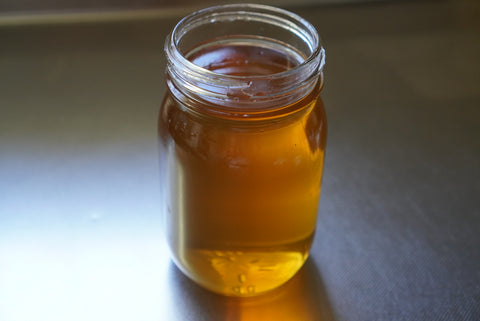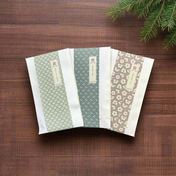Every year in early June, a special area opens in stores. It has piles of big jars, big sieves, big box of liqueurs, a large number of bags of sugar, salt, etc.
What are these products for ? It is for Umeshigoto (梅仕事, Ume work)

What is Ume?
Ume (technical name: Prunus mume) , often called Japanese plum in the west ,refers to a deciduous tall tree of Rosaceae Prunus or its fruits. Ume is related to plum and apricot. But it is unique, there is nothing like Ume. The fruits are inedible and sour when they are not yet fully ripened, known to cause indigestion if consumed. Mature fruits are considered edible but not pleasant. As Ume is highly acidic like berries and citrus, Ume are excellent when used in jams, syrups, and sauces.
People love "Umeshigoto"
If you make things using Ume, we call it Ume shigoto (梅仕事, Ume work). June-July is the season for it. Some people look forward to doing it by preparing tools and ingredients.
Here is one of my Ume shigoto this year.

I put Ume, sugar and some spices in the jars. Leaving them for a month, I will have a spiced Ume syrup. I am going to make jelly with it and add it into drinking water, fizzy water, black tea etc.
If you like to do Ume shigoto, you have to pay attention how much Ume get ripen .Unripened Ume called Ao-Ume (青梅) is suitable for syrup , extract. Ripen Ume called Kanjyuku-Ume (完熟梅) is suitable for jam, Umeboshi (梅干し) .
What is Umeboshi (梅干)?
Making Umeboshi is very traditional and one of the popular Umeshigoto.

Umeboshi(梅干) , literally dried Ume and a type of Tsukemono (Japanese pickles), has been made as preserved food for a long time.
Umeboshi were firstly mentioned in the book written in the middle of the Heian Period (AD794-1185). Then-emperor recovered from the disease by having tea with Umeboshi and konbu (sea kelp). In the Sengoku Period, warriors always took Umeboshi gan -a ball of Umeboshi, rice flour and sugar powder- with them. In the Edo Period , travellers took them as medicine.
There is a saying, "Ume wa ichinichi hitotsubu isha irazu.(梅は一日一粒医者いらず)" means you don't need doctors if you eat an Umeboshi everyday.
The effect of Umeboshi is scientifically proved to be good for restoring energy, preventing heat stroke, keeping obesity at bay, exhibiting antioxidant activity, etc.
Now you know Umeboshi is very good for you!!
How does it taste? You might be surprised that it is salty. So you can't eat so many. One or two are enough at each meal. But the salt and sour taste with an Ume fragrance go especially well with rice.
How to make Umeboshi (梅干)
You need to use ripen Ume. Wash and dry them after removing the stems.


Put a drop lid on them. And then place heavy weight on the drop lid.

Leave them in a cool place for 1 month...

Water comes out from Ume. Looks good!! When Tsuyu (梅雨, rainy season) is over, it's time to dry them!!

Dry them for 3-4 days in bright sunlight.

Done !!
You can keep them for a long time at room temperature as they contain salt and citric acid. I still keep a jar of Umeboshi made in 2018. It is said that Umeboshi can be kept for more than 100 years!!

The liquid after Ume are taken is called Umezu (梅酢). It is sour and salty with a nice Ume fragrance. We use it for pickling vegetables, stewing meat, and making dressings. It is also good to add it in water or tea to drink. It will be very good for your body to have it in hot summer as it contains mineral and citric acid.

You can't get Ume in your place? It seems you can also make Umeboshi with greengage plums although I haven't done it. Please let us know when you try it !!
Today's Recommendation
Kyoto Kouyoucha, Ume shiso konbu matcha blend by Kouyoudo - 2g x 12 packets
Sold at Buddhist temples throughout Kyoto, this matcha blend includes ume (Japanese apricot) ,powdered shiso (perilla leaves), konbu (kelp seaweed) and matcha from Kyoto, in a flavor that is certain to help bring your to enlightenment.
Related articles:
Recipe for Asazuke (浅漬け, Light-Pickled) of Small Red Radishes and Celery
References:


